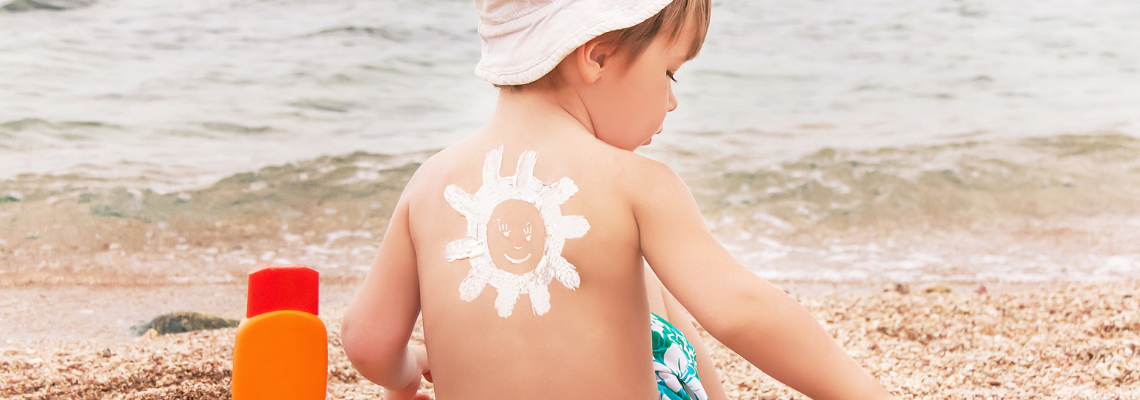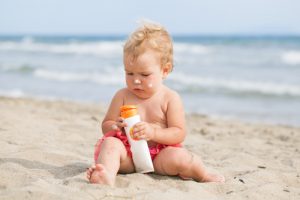
Baby sunscreen is necessary for protecting your baby from damaging UV rays. Let’s find out how to choose the right one for your child as it can protect against sunburns.
The sun is a powerful source of UV light, which can damage skin and cause sunburns. While sunscreen is always recommended to prevent skin damage, some formulas are more effective than others. The best baby sunscreen contains ingredients that protect against UVA and UVB rays while still being gentle on the skin. These formulas are also free of common allergens such as fragrances and preservatives.
Choosing a Baby Sunscreen
When choosing a baby sunscreen, it is important to consider the following features.
1. Active Ingredients
The active ingredients in baby sunscreen are the chemicals that protect the skin from UV rays. The more potent the active ingredient, the more protection it provides. Active ingredients include filters, antioxidants and UV absorbers. Examples include titanium dioxide, avobenzone, ecamsule and zinc oxide. Also, some ingredients contain both UVA and UVB protection. This means they are better suited for use on sun-exposed skin than formulas with only a single active ingredient.
2. High SPF Factor
SPF stands for sun protection factor, which indicates how much time you can spend exposed to the sun before getting burned. The higher the SPF, the longer you can stay in the sun without getting burned, and therefore, the better your protection is against UV rays. An SPF of 30 or higher is recommended for babies older than six months and for children who spend extended periods outdoors during the summer months when UV radiation levels are highest (between 10 a.m. and 3 p.m.).
 3. Chemical Composition of the Baby Sunscreen
3. Chemical Composition of the Baby Sunscreen
The chemical composition of baby sunscreen also affects how well it protects skin from sun damage. Some ingredients are water-soluble, meaning they dissolve in water and penetrate easily into the skin. Other ingredients are oil-soluble, meaning they do not dissolve easily in water but can be absorbed into the skin when applied directly to the surface. Generally, oil-soluble ingredients offer better protection than water-soluble ones because they can remain on the skin longer before being washed off.
4. Skin Type
The skin type of your baby and the time of year you plan to use the sunscreen will determine which product is best. For instance, if your baby has dry, sensitive skin, a cream might be more suitable than a spray. Babies with eczema should also avoid sunscreen that contains zinc oxide or titanium dioxide because these ingredients can cause further irritation in these cases.
5. Broad-Spectrum Protection
Broad-spectrum baby sunscreen offers the best protection against both UVA and UVB rays. It blocks both types of rays, so it is considered the most effective sunscreen. These sunscreens contain broad-spectrum filters, which provide excellent protection against UVA and UVB rays. You can use water-resistant formulas on top of makeup or on sensitive skin areas such as the face, neck and hands.
6. Water-Resistant
If you have an infant or child still in diapers, you may want to consider investing in a water-resistant sunscreen. Water-resistant sunscreens are labeled SPF 30 and higher, which means they are even more effective at protecting your child from the sun. A good water-resistant sunscreen should be water-resistant for at least 40 minutes, which is plenty of time to take your child for a swim.
7. Ease of Usage
A good infant sunscreen should be easy to apply. The sunscreen should have a pleasant smell, and it should go on easily without leaving any white streaks or making your child’s skin feel oily or greasy.
 Application Tips
Application Tips
Do not apply sunscreen to the baby’s skin more often than every three hours. Also, try to apply it at least 30 minutes before sun exposure. Applying sunscreen after swimming or sweating is generally not recommended because it can increase the risk of irritation in these cases. If you decide to apply sunscreen after swimming, be sure to use a water-resistant formula that protects against UVB and UVA rays.
Risks of Using a Baby Sunscreen
There are a few risks associated with sunscreen for babies and children with eczema or atopic dermatitis. The most common side effect is an irritating skin rash (eczema) that usually appears between one and two days after application. If your baby or child develops a rash, stop using the sunscreen and contact your doctor. Get medical attention if the rash does not improve within two days after you stop using the sunscreen. Other side effects include itchiness, burning or stinging of the skin, and redness of the skin.
The FDA has issued a warning to consumers that certain sunscreen products contain oxybenzone, which is linked to an increased risk of certain types of cancer (including breast cancer). Some sunscreen products that contain oxybenzone also contain retinyl palmitate (a form of vitamin A), which can be toxic in high doses and may cause liver toxicity in children.
Conclusion
There are many benefits of using sunscreen for your infant. It can prevent the sun from burning their skin, and it can help protect them from the harmful effects of UV rays. If you want to buy sunscreen for your child, you should make sure that it is safe for use on children.


